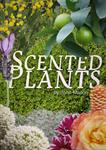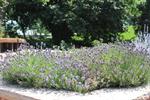 An Extract from our Scented Plants eBook
An Extract from our Scented Plants eBook
Lavender
Everyone loves lavender. As a garden plant, it’s reliable, hardy and attractive, with a profuse display of soft-coloured flower spikes for months on end. As a perfume, it has a fresh, spicy and irresistible scent. As a healing adjunct, it soothes aches and pains, and relieves nervous tension.
Lavender has been a popular cultivated plant for many centuries and is perhaps the most common, and certainly one of the most versatile herbs you could ever consider growing. It can be grown as a shrub, a tub plant or a hedge; you can keep it cut low or let it grow to over a metre tall, depending on the species. The flowers and leaves can be used for medicinal, craft, cosmetic and even culinary purposes.
Just about everyone knows the English lavender (Lavandula angustifolia) with its soft grey-green leaves and strongly scented mauve flowers, but there are numerous other species and varieties with a range of flower colours and leaf shapes. They are excellent as cottage garden plants, as semi-formal hedges, and as feature plants in Mediterranean-style courtyards.
WHAT LAVENDER TO GROW WHERE
 Though there are approximately 30 different species of Lavenders, the most commonly grown are:
Though there are approximately 30 different species of Lavenders, the most commonly grown are:
English lavender (Lavandula angustifolia)
French lavender (Lavandula dentata)
Spanish or Italian lavender (Lavandula stoechas)
Lavandula angustifolia - English lavender is a hardy sub-shrub growing to around 60- 80cm metre tall with a similar spread. Its soft grey leaves are from 2.5 to 4cm long (on a healthy plant). The flower head is a loose cylindrical spike around 4-5cm long borne on an erect stalk 5-8cm long. Clusters of small blue flowers occur at the ends of spikes only in spring. English lavender has camphor-less scent that produces the purest and most fragrant oil, hence is the preferred one if you plan on harvesting your plants.
Lavandula dentata - French lavender, generally grow to a metre or more, particularly in warm climates. Its leaves are easy to distinguish from L. angustifolia by their toothed margins and smaller size (2.5 – 3cm long). French lavender frequently flowers all year round. The flowers are on a spike like raceme to about 5cm long and 1.5cm wide borne on 12-15cm stalks with leaf-like bract at the base.
Lavandula stoechas - Spanish or Italian lavender (as it is also known) is easily identified by the large, sterile, petal-like bracts protruding from the top of the flower spikes. The size and shape of the fertile bracts on the rest of the inflorescence are usually round/cordate and hairy. The leaves are grey-green with entire margins. The stoechas species is more suited to warm conditions. It is camphor scented and flowers throughout the year, with short breaks between flowering periods. There are many hybrids available.
The variety you choose depends on your climate and purpose for growing it:
- Most lavender grows well in a Mediterranean climate, with a wet winter and dry summer.
- In the subtropics, L. dentata (French lavender) and L. stoechas (Italian lavender) will tolerate humidity.
- Beware of using L. stoechas in inland semi-arid areas as it can be a serious weed; it is also a declared environmental weed in some countries.
- L. angustifolia (English lavender) produces the purest oil. Some varieties of L. angustifolia are purer than others.
- For low or medium hedges, use L. angustifolia or L. dentata varieties.
Ask about our Lavender distance education course and relevant ebooks -including a lavender book due out late 2014